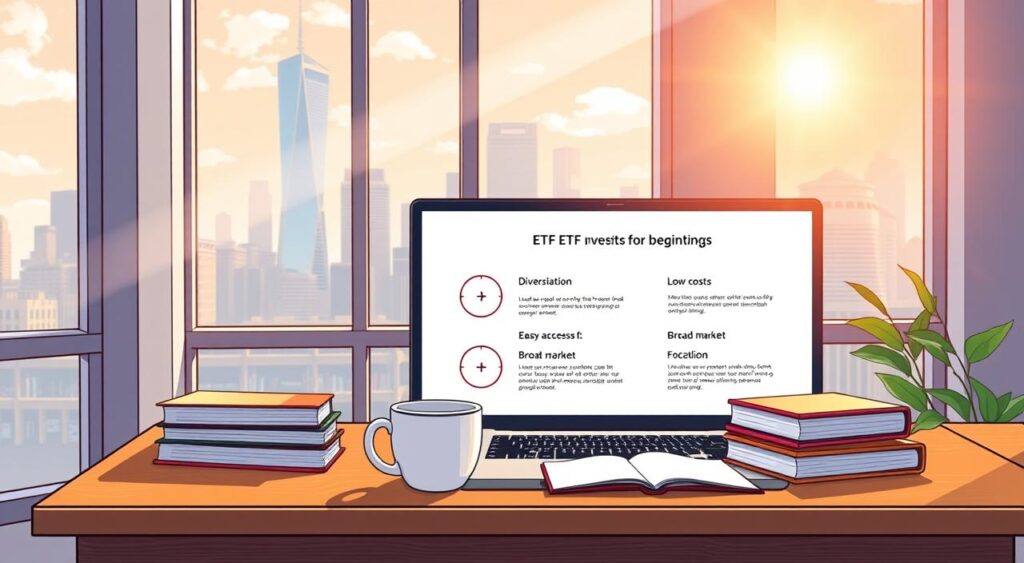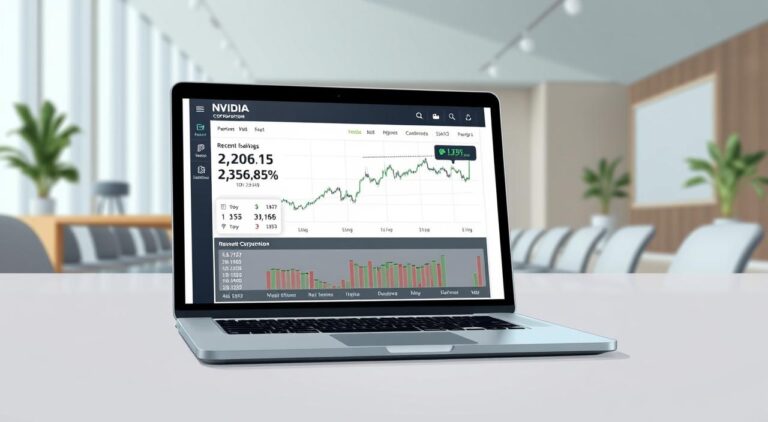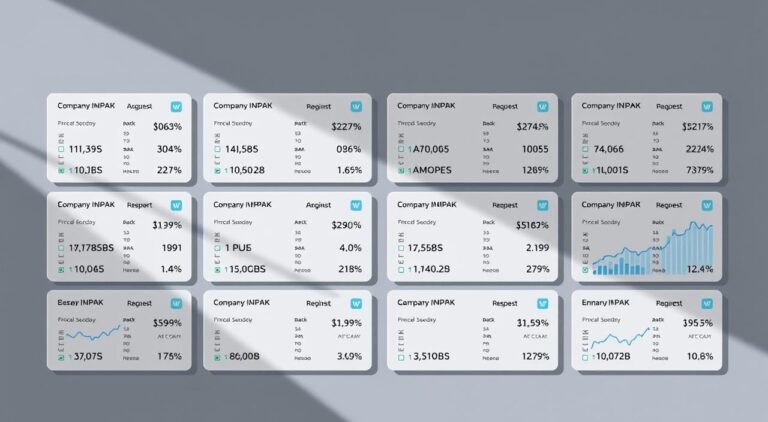How to Start Investing in ETFs as a Beginner
For those venturing into the world of investing, the concept of Exchange-Traded Funds (ETFs) presents a compelling opportunity. This Beginner’s guide to ETF investing will illuminate the essentials for anyone looking to enter the market with confidence. An ETF is essentially an investment fund that allows you to purchase a diversified collection of assets—such as stocks and bonds—all in one go. ETF investing for beginners is particularly appealing due to its straightforward nature, low expense ratios, and the potential for solid returns with minimal effort. In the following sections, we will explore everything you need to know about how to start investing in ETFs as a beginner, empowering you to make informed investment decisions.
Key Takeaways
- ETFs allow easy access to diversified investment portfolios.
- They typically have lower fees compared to traditional mutual funds.
- Investing in ETFs can be a strategic entry point for new investors.
- Flexibility in trading makes ETFs appealing for various strategies.
- Understanding how ETFs work is crucial for successful investing.
Understanding ETFs: What They Are and How They Work
Exchange-Traded Funds, or ETFs, offer a unique way for individuals to invest in the financial markets. ETFs for beginners explained demystify how these investment vehicles function, allowing new investors to grasp essential concepts and strategies. Understanding the fundamental components of ETFs reveals their growing popularity among various investor demographics.
Definition of ETFs
ETFs are investment funds that trade on stock exchanges much like individual stocks. They hold a collection of assets, such as stocks, bonds, or commodities. When an investor purchases shares of an ETF, they effectively own a piece of the underlying assets grouped within that fund. This structure provides a straightforward pathway for diversification across different sectors or asset classes.
Key Features of ETFs
Several key features of ETFs set them apart from traditional mutual funds:
- Trading Flexibility: ETFs can be bought or sold throughout the trading day, allowing investors to react swiftly to market changes.
- Cost Efficiency: Usually, ETFs have lower management fees compared to mutual funds, enhancing overall investment returns.
- Transparency: Most ETFs disclose their holdings daily, enabling investors to make informed decisions.
Benefits of Investing in ETFs
The benefits of ETF investing are substantial and attract a range of investors:
- Diversification: By investing in an ETF, individuals can gain exposure to dozens, if not hundreds, of stocks or bonds in a single transaction.
- Accessibility: ETFs often require lower minimum investments compared to traditional mutual funds, making them suitable for novice investors.
- Tax Efficiency: The structure of ETFs typically results in fewer taxable events, which can lead to tax savings over time.
Why ETFs Are Ideal for Beginner Investors
Exchange-Traded Funds (ETFs) represent an excellent entry point for those new to investing. They offer a variety of benefits that cater specifically to novice investors. Understanding how ETFs can simplify the investing process is crucial for anyone exploring easy ways to start investing in ETFs.
Diversification Made Easy
One of the standout features of ETFs is their ability to provide instant diversification. Instead of purchasing individual stocks, an ETF allows investors to buy a collection of assets in a single transaction. This minimizes risk by spreading your investment across various sectors or companies. Implementing effective ETF investment strategies for beginners is straightforward when considering this diversification option.
Low Expense Ratios
Many ETFs come with low expense ratios compared to mutual funds. This means that the fees associated with management are minimal. For beginner investors, this is an appealing aspect as it ensures more of the investment returns actually contribute to their portfolio. Exploring low-cost ETF options for beginners can further enhance these cost-saving benefits.
Flexibility and Liquidity
ETFs provide a high level of flexibility and liquidity. Investors can buy or sell shares of ETFs anytime during trading hours, similar to stocks. This dynamic allows for quick adjustments based on market conditions or personal financial needs, adding to the overall ease of managing investments.

Steps to Start Investing in ETFs
Starting your journey in ETF investing can be simplified with a clear approach. By following a structured process, beginners can successfully navigate the world of exchange-traded funds. This section provides a step-by-step guide to investing in ETFs, targeting the essential actions needed to begin. Familiarizing yourself with these steps will accelerate your understanding of how to begin with ETFs.
Assess Your Investment Goals
Before diving into ETF investments, clearly outline your investment goals. Consider factors like your risk tolerance and time horizon. Understanding these aspects will help you tailor your investments to match your financial situation. This assessment serves as the foundation for making informed choices as you progress through this step-by-step guide to investing in ETFs.
Choose a Brokerage Account
Selecting the right brokerage account is a critical step in your ETF investing journey. Research various brokers to find one that aligns with your needs, focusing on features such as commissions, customer service, and available educational resources. A well-chosen account will enhance your experience and support your learning process, reflecting essential beginner’s tips for ETF investing.
Select Your First ETFs
Choosing your initial ETFs is an exciting and pivotal moment in your investment journey. Conduct comprehensive research on different ETFs, assessing their performance history and expense ratios. Focus on selecting ETFs that fit within your established investment strategy. The right selection can greatly influence your success as you learn how to begin with ETFs.
Tips for Successful ETF Investing
Investing in ETFs can lead to rewarding outcomes when approached with the right strategies. Whether you are a novice or looking to refine your current investment approach, implementing some best practices for ETF investors can significantly enhance your experience. Proper research, a focus on managing ETF investment fees and taxes, and routine portfolio adjustments are essential aspects of successful ETF investing.
Research and Analyze ETFs
Conducting thorough research on potential ETFs stands as one of the critical tips for making the most of ETF investments. Investors should delve into the underlying assets, analyze performance against relevant benchmarks, and determine how well an ETF aligns with their individual investment objectives. This diligence enables more informed decision-making and enhances the likelihood of favorable returns.
Watch Out for Taxes and Fees
When investing in ETFs, being mindful of the associated costs is vital. Managing ETF investment fees and taxes requires awareness of various charges that might diminish returns, such as expense ratios and commissions. Additionally, consider the capital gains taxes that can arise from selling ETFs at a profit. Understanding these factors can lead to more strategic investment choices, optimizing overall returns.
Rebalance Your Portfolio
Regularly rebalancing your portfolio is another important practice for maintaining a well-diversified investment strategy. As market conditions change, the weightings of different assets may shift, potentially increasing risk. Periodic adjustments ensure that your investments remain aligned with your risk tolerance and long-term goals. Implementing this approach not only helps in managing risk but also enhances the potential for achieving desired financial outcomes.

By remaining committed to these essential practices, investors can navigate the complexities of ETF investing more effectively. To explore more on maximizing investment returns, refer to resources that provide extensive financial insights and strategies, such as valuable investment guides.
Common Mistakes to Avoid with ETFs
Investing in Exchange-Traded Funds (ETFs) can be a straightforward and rewarding experience, but beginners often fall into common pitfalls in ETF investing that can negatively impact their returns. Understanding these mistakes is crucial for anyone looking to optimize their investment strategy. By being aware of the errors that frequently occur, new investors can develop a more effective approach to building their portfolios.
Ignoring Market Trends
One significant mistake beginners make with ETFs is ignoring market trends. Staying informed about current events and economic conditions is essential for making wise investment choices. Market fluctuations can greatly influence the performance of various sectors and ETFs, so it’s important to remain vigilant and adjust your investments accordingly. By factoring in these trends, investors increase their chances of making informed decisions that align with their financial goals.
Overtrading and Poor Timing
Another common error is overtrading, which often results from trying to time the market. Frequent buying and selling can lead to high transaction costs and diminish the overall return on investments. Avoiding errors in ETF investments requires a disciplined approach—sticking to a long-term strategy rather than reacting to market fluctuations can lead to more consistent outcomes. It’s vital to resist the temptation to chase quick profits, as this can lead to disappointing results.
Focusing Solely on Past Performance
Many investors make the mistake of focusing solely on past performance when selecting ETFs. While historical returns can offer some insight, they do not guarantee future success. Effective ETF investing should consider a well-rounded perspective, including market conditions, portfolio composition, and fund management strategy. By recognizing that past performance is just one piece of the puzzle, beginners can make more balanced decisions that foster long-term growth.






